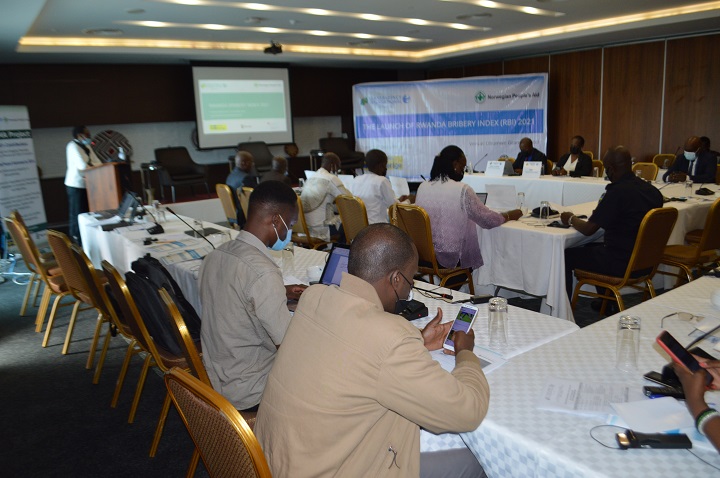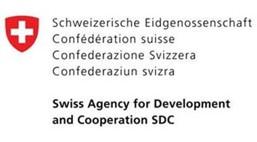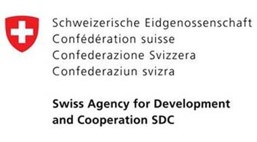TI-RW Launches Rwanda Bribery Index (RBI) 2021

On Tuesday 14th December 2021, Transparency International Rwanda (TI-RW) launched the 12th edition of “Rwanda Bribery Index (RBI)”, its annual publication whose aim is to establish experiences and perceptions of this specific form of corruption (bribery) in Rwanda.
According to RBI 2021 findings, 50% of respondents consider the level of corruption to be low in Rwanda while 17.40% perceive that it is high.
As in the previous RBI editions, the majority of Rwandans (71.9%) commend the effectiveness of the government’s efforts in the fight against corruption. However, since the outbreak of Covid-19, the perception of effectiveness has slightly decreased from 81.9% in 2019 to 75.9% in 2020 and 71.9% in 2021.
“In the light of the existing high political will and clear legal framework, the government has surely done a lot to fight corruption and prevent those who indulge in corrupt practices. However, we still have a long journey to walk. We should not celebrate or compare ourselves with those other countries lagging,” said Marie Immaculée Ingabire, Chairperson of TI-RW. “It is up to all anti-corruption actors and stakeholders to renew their commitment and join efforts in this fight.”
As revealed by RBI 2021, over the last 12 months of 2021, 22.9% of Rwandans directly or indirectly demanded or offered a bribe in an interaction with an institution. Compared to the previous editions (before Covid-19), this bribe encounter has increased by 4.40% – from 18.50% in 2019 (before Covid-19) to 19.20% and 22.90% in 2021 amid the pandemic.
The survey also indicates that the private sector and traffic police have registered the highest prevalence of bribes with 9.78% and 7.60% respectively while the national prevalence stands at 2.30% from 2.50% in 2020 and 2% in 2019. The prevalence of bribes has kept increasing in the Private Sector (from 4.23% in 2019 to 7% in 2020 and 9.78% in 2021).
Furthermore, the findings revealed that the prevalence of bribes has sharply increased in the education sector (from 0% 2020 to 4.8% in 2021), affecting the Ministry of Education, its affiliated agencies, and directors and officers of education at the district levels.
On the other hand, interestingly, Rwanda Investigation Bureau (RIB) has made remarkable progress for all the past three years. The prevalence of bribes has decreased from 7.08% in 2019 to 6% in 2020 and 1.21% in 2021).
Concerning the likelihood of encountering bribes while seeking services, the likelihood stands at 28.10% to secure a job in the private sector, attaining a construction permit in the local government (21.50%), and accessing various services during COVID-19 restriction measures from the traffic police (20.20%).
The report underpins that a low level of reporting remains to be among the challenges impeding the fight against corruption. 89.4% did not report with the main reason being fear of self-incrimination (26%). Others (22%) said that it did not occur to them that they needed to report while 21% said they knew no action would be taken even if they reported.
The report also recommends all the line institutions in the fight against corruption to maximize efforts geared towards raising public awareness on the negative effects of corruption, strengthening existing corruption reporting tools as well as building the capacity of their staff in terms of knowledge and equipment.
Background
Rwanda Bribery Index (RBI) is an annual publication (since 2010) conducted by Transparency International Rwanda with the aim of assessing the incidence of bribery in different institutions and services that are perceived to be most prone to corruption. RBI 2021 is the 12th edition of its kind and, as the last edition (RBI 2020), it was conducted and launched amid the Covid-19 pandemic.
The 2021 survey was conducted in all 4 provinces of Rwanda and City of Kigali in 11 quasi-randomly selected districts with 2,420 respondents as the sample size. 53.55% of the respondents were men while women count 46.45%. 66.53% respondents are rural dwellers while 33.47% live in urban areas.

















